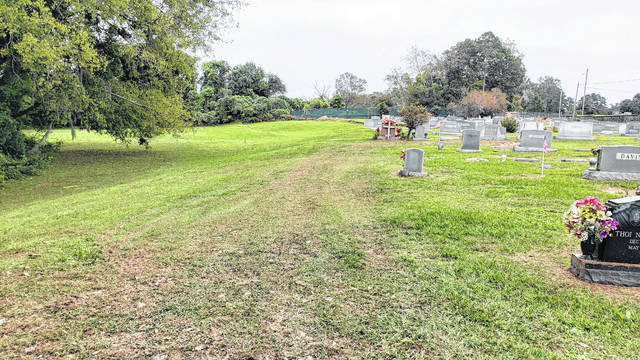ELIZABETHTOWN — The Elizabethtown Cemetery reconstruction project is gaining momentum.
“We received a tentative schedule, but it is important to remember that this is subject to change,” said Town Manager Eddie Madden. “We are waiting to hear back from Emergency Management about the bidding documents.”
The design has been finalized. It is in place to be reviewed by the state Emergency Management office, and the next step would be advertising for bids. That may happen as soon as Tuesday.
From there a pre-bid meeting will be Nov. 5, and questions would be due in by Nov. 10. The opening of the bids would be Dec. 1, with a rebid date in place if needed.
Scott Sigmon, with the engineering firm W.K. Dickson, wrote in an email to Madden that the design of the sheet pile wall has taken longer than expected. The wall will help hold shifting soil. The firm has done a similar project in Fayetteville.
As the tentative schedule lays out, the bid award could be made in January, construction would start in February and be complete about five months later.
The cemetery was damaged after Hurricane Florence dropped a record 35.93 inches of rain on the town in September 2018, topping the previous state record of 24.06 inches having fallen in Southport during Hurricane Floyd in 1999.
The Cape Fear River rose its worst flood level since 1945 and its second-highest on record.
The cemetery is high on a hill overlooking the Cape Fear. It runs along East Queen Street to North Lower Street, where the back of the parcel for Four County Electric Corp. has a fence.
Parts of the asphalt have large cracks, and the side toward the river has a visible shifting of the soil where underneath layers became saturated. Drainage is part of the incoming project that was explained to the public in an open forum at the Cape Fear Farmer’s Market.
“The drainage system near the surface is like that of what is used on fairways at golf courses,” Sigmon said in June. “This will keep the grass from getting so wet.”
Such a massive amount of rain in such a brief period caused the sand to turn into slush, sort of like when a sandcastle is built on the beach with water poured over it. The combination of sand and water creates viscosity, meaning that it is kind of between a liquid and solid.
Emily M. Williams can be reached at 910-247-9133 or ewilliams@bladenjournal.com.


